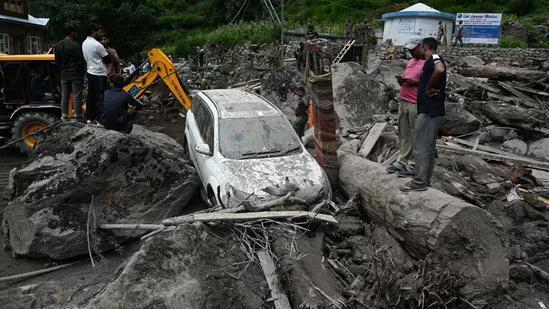
At least 60 killed, several trapped after cloudburst in J&K
A devastating cloudburst in Jammu and Kashmir’s Kishtwar district has left a trail of destruction, claiming the lives of at least 60 people and leaving over 100 injured. The disaster struck Chashoti village on Thursday afternoon, catching residents off guard and causing widespread damage to properties and infrastructure.
According to reports, the cloudburst occurred at around 3 pm, causing a massive flash flood that swept away homes, bridges, and buildings, leaving a trail of debris and destruction in its wake. The swift and unexpected nature of the disaster caught many residents by surprise, leaving them with little time to escape the fury of the floodwaters.
Chief Minister Omar Abdullah confirmed the fatalities, stating that at least 60 people had lost their lives in the disaster. In addition to the loss of life, over 100 people were injured, many of whom are being treated in local hospitals.
However, the true extent of the damage may be even more devastating than initially reported. Jammu and Kashmir National Conference Chief Farooq Abdullah has stated that he believes more than 500 people are still trapped under the debris, with many feared dead. The rescue operation is ongoing, with emergency services and relief teams working around the clock to locate and rescue those trapped.
The cloudburst was particularly devastating in Chashoti village, which was caught in the direct path of the floodwaters. The village has been almost completely destroyed, with many homes and buildings reduced to rubble. The village’s infrastructure, including bridges and roads, has also been severely damaged, making it difficult for rescue teams to access the area.
Rescue operations are being carried out by a team of emergency responders, including the Indian Army, the National Disaster Response Force (NDRF), and local police. The teams are working in challenging conditions, with many areas still inaccessible due to the extent of the damage.
The cause of the cloudburst is still unclear, but experts believe it may have been triggered by a combination of factors, including heavy rainfall and the presence of glaciers in the area. The region has been experiencing heavy rainfall in recent days, which has led to an increase in the risk of flash flooding.
The disaster has sent shockwaves through the region, with many residents left homeless and struggling to come to terms with the loss of life and property. The government has promised to provide all necessary support to those affected, including emergency aid and shelter.
The cloudburst has also highlighted the need for improved disaster preparedness and response in the region. While the emergency services and relief teams have responded quickly to the disaster, many residents have expressed frustration at the lack of warning and preparedness.
In the aftermath of the disaster, there are concerns about the long-term impact on the region’s infrastructure and economy. The destruction of homes and businesses will likely have a significant impact on the local community, and it will be important for the government and local authorities to work together to provide support and assistance.
As the rescue operation continues, the death toll is likely to rise, and the true extent of the damage will only become clear in the coming days. For now, the focus is on rescuing those trapped and providing support to those affected by this devastating disaster.






